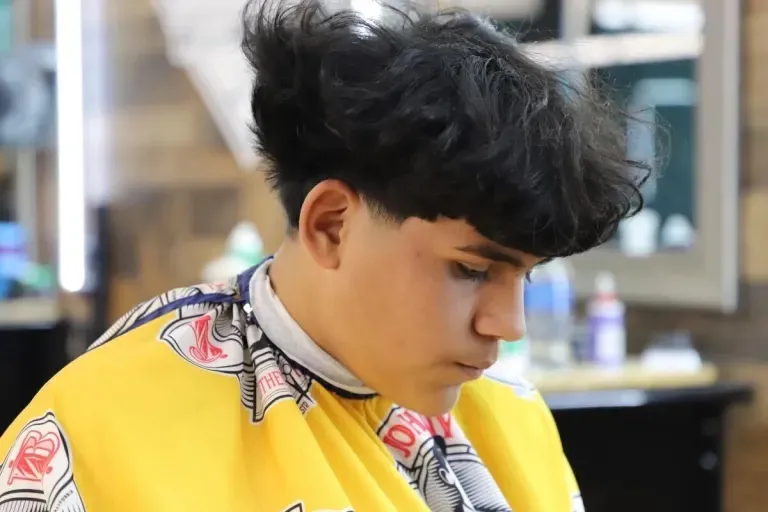The haircut you’re about to see has probably been seen before, regardless of its name. This is a hybrid of a bowl-cut and a Caesar cut that is hugely popular among young Latinos, especially in California, Texas, and Florida. The Edgar cut, you guessed it.
Even though the hairstyle is very popular, it hasn’t been without controversy.
The official Facebook and Instagram pages of a Texas restaurant were recently flooded with “anti-Edgar” memes. In the photo, a big “X” was drawn over a boy wearing the hairstyle and read, “NO EDGARS.” The restaurant captioned the picture with: “Should we ban chili bowls/Edgars?””
Many people took offense at the meme, since it is culturally tied to Latinos. Some viewers viewed it as a harmless joke, including Ricky Ortiz, the store owner, who identifies as Mexican-American.
In the words of one Instagram user, “imagine discriminating against your own customers.” “LOL you live in the city of Edgar.” Racism has taken on a new face.”
El Camino’s post was deemed racist by one user, who explained, “That’s the same as saying no corn rows, no dreads.”
While El Camino and its owner Ortiz have received negative feedback, they have not given up on their posts.
Ortiz told Nexstar this week that the meme was obviously a joke. The joke is clearly half-hearted as well. Car theft and violent crime are shown on the news every day – it’s a bunch of kids with Edgar haircuts.”
Also, read Top Haircuts for Men
‘Edgar’ 101

Eybard Hernandez discussed the popularity of the Edgar cut with Nexstar’s ValleyCentral last year. The haircut accounts for about 75% of Hernandez’s barbering business; “all the kids” wear it, no matter their age.
In 2020, Dagobeat released a song called “Puro [Expletive] 956 Cuh,” which helped boost the haircut’s popularity – at least in the Valley. Young Latinos with the style have even been lovingly referred to as “Cuhs” since then.
Though TikTok has made the hairstyle highly fashionable in recent years, the rise of the haircut goes back even further than 2020.
Various media outlets report that the Edgar is an element of “trokiando” culture, a style of lowrider similar to Chicano lowriders but centered around trucks and a modern “ranchera” feel. These jeans are embossed with decorative patterns on the back pockets, and square-toed boots and Jordans are also symbols of the subculture.
Scholars are also divided over whether indigenous roots can be found in the hairstyle. Apparently, the haircut resembles that of Jumano tribe men who lived in the Valley area between 1500 and 1700, according to the Texas State Historical Association.
Its popularity, even among Latinos, has been relatively recent, despite its indigenous roots.
Alex Gradilla, a professor of Chicana and Chicano studies at California State University, previously told NBC News that while the Edgar is associated with culture and a kind of “blue-collar culture” among Latino immigrants in the U.S., it can have negative connotations as well.
According to Gradilla, the haircut can lead to people engaging in forms of classism, inferring that those with the haircut are poor or lower class.
Gradilla told NBC News that it is rare to see Latinos with Edgar haircuts. Edgar haircuts are always worn by very dark-skinned Latinos.
The cut may inspire pride and respect for some Latinos, but many others find it conjures too many assumptions and even ridicule for those who wear it. The Edgar continues to be a hot topic even among primarily Latino populations.
The Edgar cut was even banned from a local high school by some residents of El Paso (which has an 82.8% Hispanic population according to the 2020 U.S. Census), as the haircut was deemed to have “detrimental effects” on education as well as “antagonize the general student population.”
There is still tension over the Edgar, despite the fact that the measure did not pass.







![Top 15 Edgar Haircuts for Men in 2025 [Explained] Edgar Haircuts](https://taperfadee.com/wp-content/uploads/2024/10/Edgar-Haircuts-150x150.jpg)
